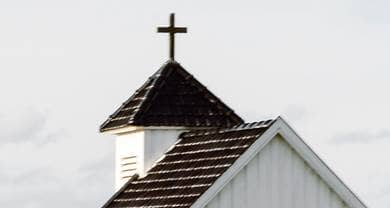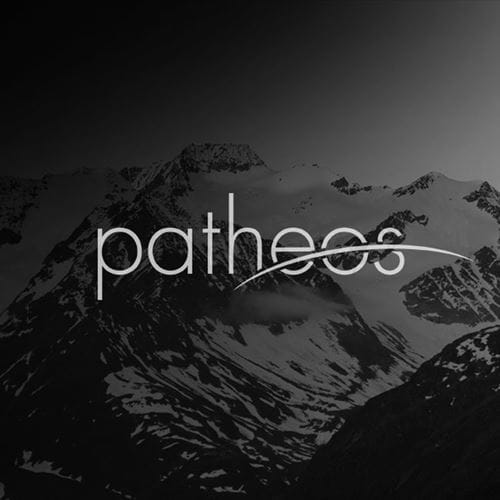- Trending:
- Pope Leo Xiv
- |
- Israel
- |
- Trump
- |
- Social Justice
- |
- Peace
- |
- Love

RELIGION LIBRARY
Methodist
Schisms and Sects
Methodist practices originated within Anglicanism as supplements to the Church of England's traditions. Only after John Wesley's death did the movement establish itself as a separate denomination. As Methodism developed it underwent a number of splits and mergers. The splits were almost always occasioned by one of three issues: 1) governance (should there be bishops? to what extent do laypeople take leadership roles?); 2) race (could northern and southern churches remain in the same denomination in the United States? should African Americans have separate churches?); and 3) holiness (what did Wesley mean by "Christian Perfection"? was it achieved all at once or gradually? Was it accompanied by other signs of the Spirit such as shaking and speaking in tongues?).
Governance. John Wesley intended to revitalize the faith of members of the Church of England, and was careful to avoid schism while he was alive. He did not ordain ministers in England, he relied on lay itinerants and preachers. Any priests in England during his life able to administer the sacraments had to be ordained by a bishop of the Church of England. When the need arose to ordain Methodist ministers in America apart from the Church of England he empowered Thomas Coke and Francis Asbury to do so, but he gave them the title of "superintendent" rather than "bishop," in part as an expression of his discomfort at appearing to establish a church apart from the Church of England. But the Americans soon began calling their leaders bishops, and organized their new denomination on an Episcopal (from the Greek episcopos, "bishop") model. Following Wesley's death, English Methodists, in contrast, organized on a Presbyterian (from the Greek presbuteros, "elder") model in which elected elders represent congregations at regional and then national decision-making bodies.
In England, Primitive Methodists formed in 1811, and Bible Christians in 1819, because they favored more lay leadership, and felt that the Methodist Episcopal Church no longer stressed evangelism.
From the beginning the Episcopal governance structure rubbed some Americans the wrong way. James O'Kelly was an Irish immigrant ordained at the 1784-85 Christmas Conference. He disliked the growing power of bishops, especially their authority to appoint preachers to churches without the preachers' consent. At the 1792 General Conference he moved to allow preachers to appeal their appointments if they did not like them. When this motion was rejected he formed the Republican Methodist Church (later called the Christian Church).
In 1852 in Georgia the Congregational Methodist movement rejected Episcopal governance and formed a new church. In the 1920s, the Methodist Protestant Church was created. When it merged in 1939 with the major branch of Methodism that eventually became the United Methodist Church, many of its members were upset by the Episcopal organization of the United Methodist Church, and its efforts at integration. These congregations formed new denominations. One retained the name Methodist Protestant Church, another was called the Bible Protestant Church (later, the Fellowship of Fundamental Bible Churches). In 1940 the Southern Methodist and in 1946 Evangelical Methodist churches formed for similar reasons.
Race. John Wesley strongly condemned slavery, calling it "the sum of all villainies." Methodists were not allowed to buy or sell slaves. But the Methodist Episcopal Church in America did not, as an organization, strongly condemn slavery. As the abolitionist movement in the United States grew in the mid-1800s, pressure grew on the Church from both sides. Following the General Conferences of 1836 and 1849, when the issue was debated but the bishops decided not to take a stand, George Scott from New England broke away to form the Wesleyan Methodist Connection.
At the 1844 General Conference Francis Harding, a member of the Baltimore Annual Conference, lost his appeal to reverse his suspension for refusing to free slaves he had acquired in marriage. The Conference also voted to ask James O. Andrew, a bishop from Georgia whose wife owned several slaves, to suspend his exercise of episcopal functions. Shortly thereafter delegates from slave-holding states formed a Plan of Separation, and in 1845 formed the Methodist Episcopal Church, South.
The Wesleyan Church of America, founded in 1843, and the Free Methodist Church, established in 1860, both rejected slavery and worked for abolition. They separated from the larger Methodist community over these issues and others, including a willingness to ordain women.
African Americans formed their own Methodist denominations in response to their treatment as second-class members in the Methodist Episcopal Church. Richard Allen, born into slavery, bought his freedom and became an important leader within the black community and the first black Methodist minister. With the help of businessman James Forten, he established the African Methodist Episcopal Church in 1816. Another black Methodist community, the African Methodist Episcopal Zion Church, was formed in 1820. In 1870 the Methodist Episcopal Church, South, formed a separate denomination for its black members, call the Colored Methodist Episcopal Church (now the Christian Methodist Episcopal Church).
Holiness. Methodists have struggled over John Wesley's teachings on
Christian perfection. Wesley agreed with other Protestants that Christians were saved through justification, which is the forgiveness of sin. But he also argued (other Protestants disagreed) that Christians could stop sinning and live a perfectly sanctified, or holy, life. Exactly what he meant by this, and whether it was a gradual process toward perfection or a sudden outpouring of additional grace that gave the gift of sanctification all at once, has been controversial. There is general agreement, however, that perfection is always motivated by the love of God rather than any personal ambition and that even if it was attained, it was not necessarily a permanent achievement or ongoing state of the soul.
In general, as the members of Methodist churches became upwardly mobile economically, they tended to stress holiness less. The Church of the Nazarene was formed in 1908 by Methodists and Wesleyans who felt the need for a renewed interest in the pursuit of holiness.
Finally, there have been other churches related to the Methodist Episcopal Church in America that were never formally a part of that church and did not split off from it. Philip William Otterbein was a German Reformed pastor who immigrated to America in 1752. In 1754 he had a profound experience of divine forgiveness and power. Together with Martin Boehm and Peter Kemp he formed the United Brethren in Christ in 1800, and modeled it on the Methodist organization. Similarly, Jacob Albright had a deep religious experience in 1791 and began preaching to fellow German immigrants in Pennsylvania in 1796. In 1803 they formed Die Evangelische Gemeinschaft (The Evangelical Association).
In 1939 the Methodist Episcopal Church, the Methodist Protestant Church, and the Methodist Episcopal Church, South merged to form the Methodist Church. The Evangelical United Brethren and the Methodist Church merged in 1968 to form the United Methodist Church.
Study Questions:
1. What were the three underlying issues that resulted in sects to break from Methodism?
2. How did Methodism's style of governance shift after John Wesley's death? What notable schisms did this create?
3. How did Wesley understand slavery? What schisms were formed when the Methodist Churches in America did not follow his stance?
4. What is Christian perfection? Where does the motivation come from, and why was this a controversial idea?










